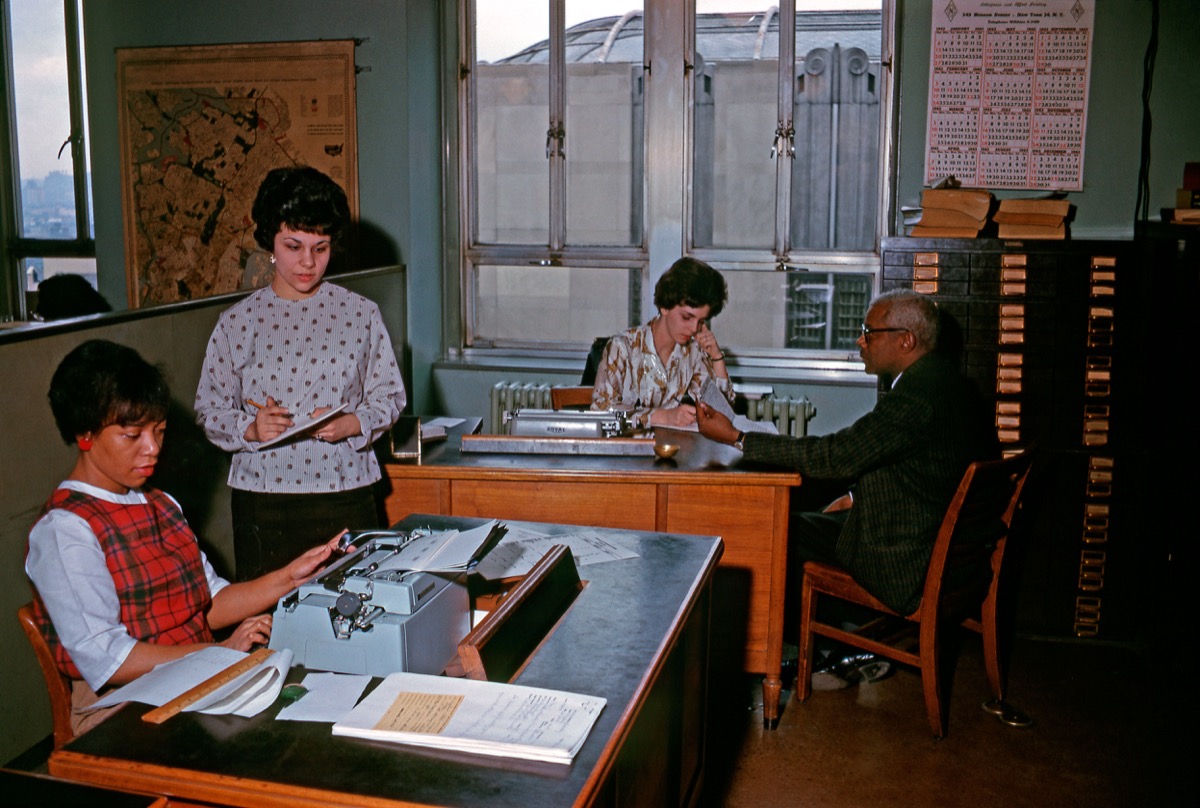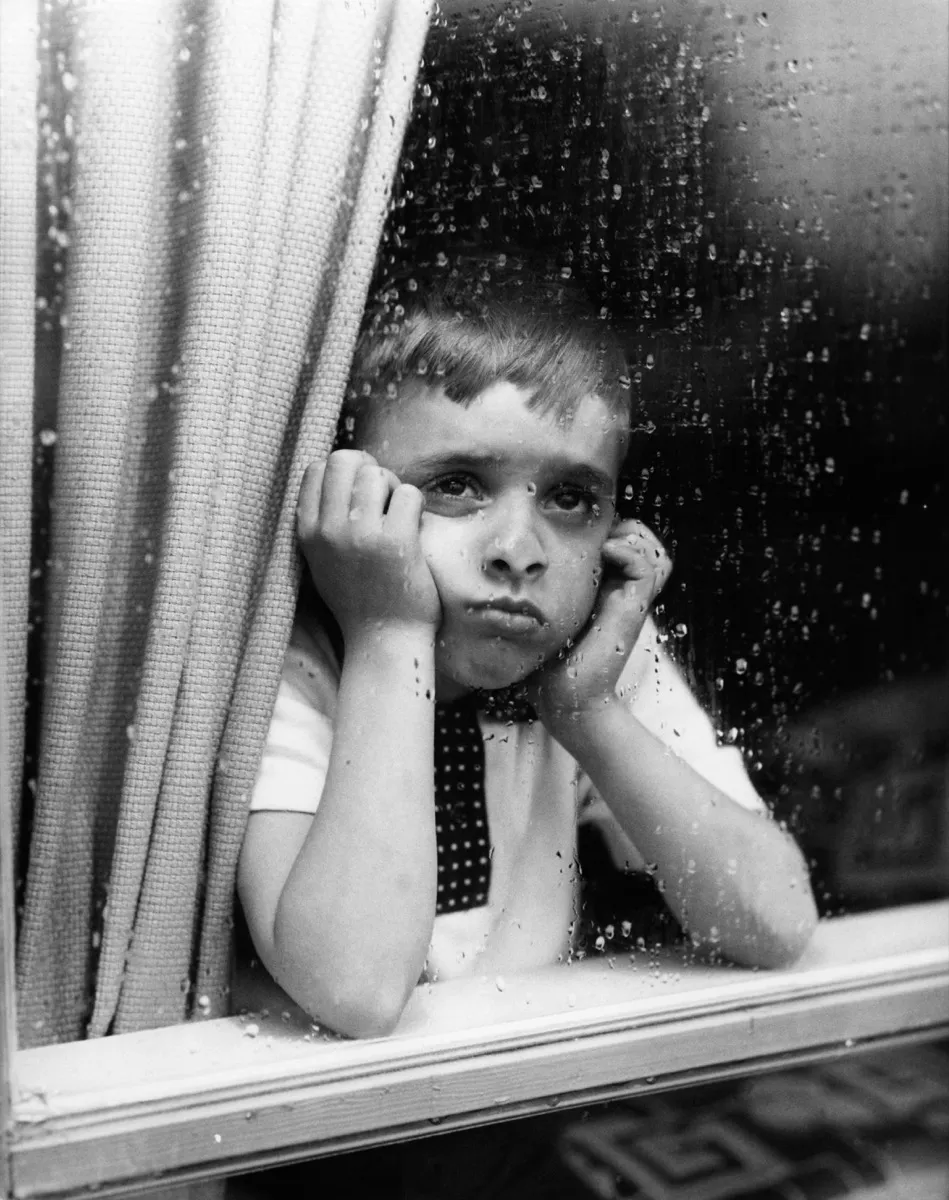This Is How Parenting Has Changed Since the 1950s

Though the fundamentals are still the same, parenting has changed quite a bit in the past 70 or so years. Sure, moms and dads today still deal with changing diapers, taming temper tantrums, and getting grape juice stains out of white shirts, but they also have to cope with cyberbullying and the various threats to their children that seem to loom at every corner. In the 1950s, children—if you can believe it—had more freedom, very few mothers worked, and very few dads spent time with their kids. Read on to discover what parenting was like in the 1950s.
Kids in the 1950s were given more freedom to do as they pleased.

Children today might find this hard to believe, but for much of the 20th century, it was relatively common for young children to walk home by themselves. When Slate surveyed some 4,000 readers about their upbringings, they found that the closer to the 21st century someone grew up, the longer they had to wait before their parents let them go out alone.
Among the group that grew up in the 1950s, approximately 40 percent of respondents said that they were able to walk to school alone starting in just 2nd and 3rd grade. For folks who grew up in the ’90s, on the other hand, the majority had to wait until middle school to take those solo ventures.
Fewer children were being raised by divorced and single parents in the 1960s.

While people certainly ended their marriages in the 1950s and ’60s, there was a deeply-ingrained social stigma against divorce that has undeniably lessened in the decades since.
According to the Pew Research Center, while 73 percent of U.S. children under the age of 17 were living with their married parents in 1960, only 46 percent of that same demographic was living under the roof of still-wed spouses in 2013. Similarly, while just 9 percent of children were raised by a single parent in 1960, 34 percent were in 2013.
Dads spent less than 20 minutes with their children.

In the first half of the 20th century, having a happy home life—and a few kids—was an integral part of the American Dream. But it turns out that parents were actually spending less time with their kids in those days. A 2016 study published in the Journal of Marriage and Family analyzed data from 11 Western nations and found that moms spent an average of 54 minutes with their kids each day in 1965. As of 2012, that number had nearly doubled—up to 104 minutes. Fathers spent even less time with their children in 1965: just 16 minutes a day. But by 2012, dads were clocking an average of 59 minutes of quality time with their kids.
Moms only spent a few hours per week at work in the ’60s.

In the 21st century, moms are able to do it all. Not only do they spend more time with their kids than ever before, they’re able to do so while simultaneously working outside the home. Of course, not every mom is a working woman—and that’s fine!—but there are far more mothers in the workplace than there were some 50 years ago, and they’re spending longer hours working, too. According to data from the Pew Research Center, the average mom in 2016 spent 25 hours a week on paid work, up from 8 hours a week in 1965.
Dads hardly helped around the house.

In the 1960s, dads seldom pitched in around the house. In fact, according to the Pew Research Center, men spent an average of just 2.5 hours on child care and 4 hours on housework on a weekly basis back in 1965. But in 2011, the average father spent 7 hours on child care and 10 hours on housework, indicating a much more equal division of responsibilities.
First-time moms in the ’70s were much younger.

In 1970, the average age of a first-time mom in OECD countries (as defined here) was 24.3 years old. That’s largely because back then, there was a huge amount of societal pressure placed on women to marry and have children, and less expectation that women would return to work after becoming mothers.
According to a 2017 report from the Bureau of Labor Statistics, in 1970, just over 40 percent of American women were employed; by 2015, that number was nearing 60 percent. With more women dedicating themselves to their careers during their prime earning years, it makes sense that by the mid-2000s, the average age of a first-time mom in OECD countries was 27.7 years old.
Children’s mental health issues were taken less seriously.

Throughout the majority of the 20th century, mental health issues like depression and OCD were largely swept under the rug entirely. Thankfully, though, medical advances and reduced social stigma surrounding mental health issues allowed for treatment to become both more focused and more widespread. For example, the creation of antipsychotic drugs and advancements in health care caused the number of mentally ill patients institutionalized at public hospitals to decrease by 92 percent from 1955 to 1994, according to a report from Out of the Shadows: Confronting America’s Mental Illness Crisis.
And, according to the Centers for Disease Control and Prevention (CDC), the number of teens and tweens diagnosed with anxiety or depression rose recently, from 5.4 percent in 2003 to 8.4 percent in 2012; and more than 78 percent of those diagnosed with depression were able to receive treatment. And if you’re not sure whether your child is depressed, then listen to what they’re saying; People Who Use These Words May Suffer From Depression.
To discover more amazing secrets about living your best life, click here to follow us on Instagram!